Flowering trees in Mount Kanla-on gaining public attention
BY: ERROL A. GATUMBATO
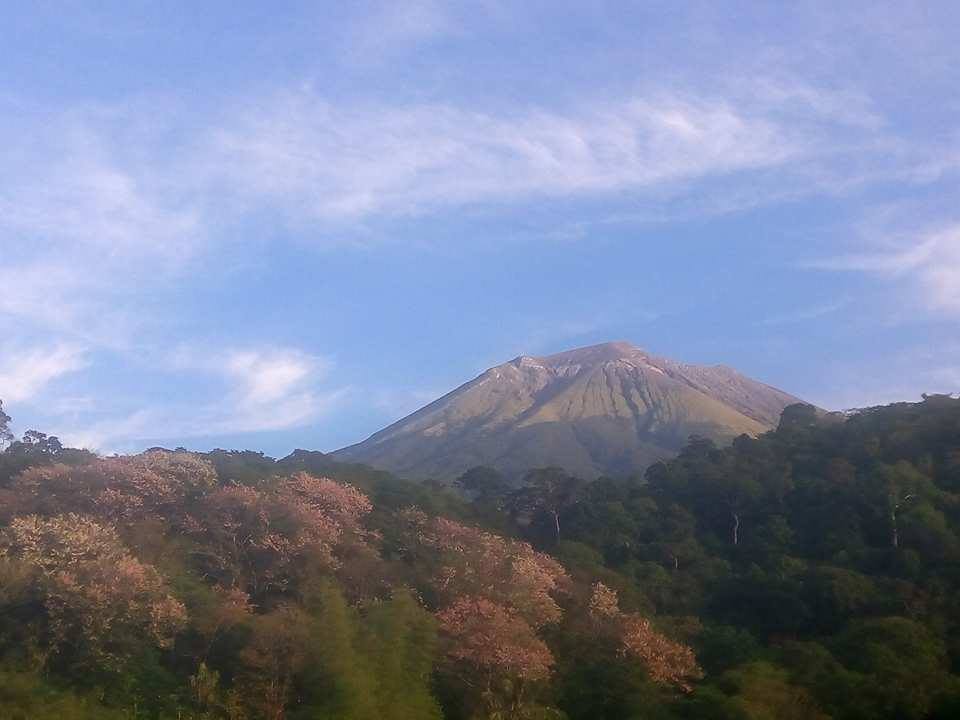
The blooming flowers of Antsoan tree with the imposing background of the Kanla-on Volcano in Negros Island. Errol Gillang photo*
Beautiful photos of flowering trees at the foot slope of the Mount Kanla-on Natural Park in Negros Island have spread online during the past weeks. Specifically found in Sitio Calapnagan, Brgy. Biak-na-Bato, La Castellana in Negros Occidental, about two to three hours drive from Bacolod City, the blooming trees, with the imposing background of the Kanla-on Volcano, were photographed by several persons and they uploaded some photos in social media. The views are, indeed, marvelous as they really look like the Cherry blossoms, or Sakura trees, which are popular attractions in Japan. From then on, according to MKNP staff, the number of visitors increased at Calapnagan, where the administration center of the park is also located.
Alleged Palawan cherry blossoms
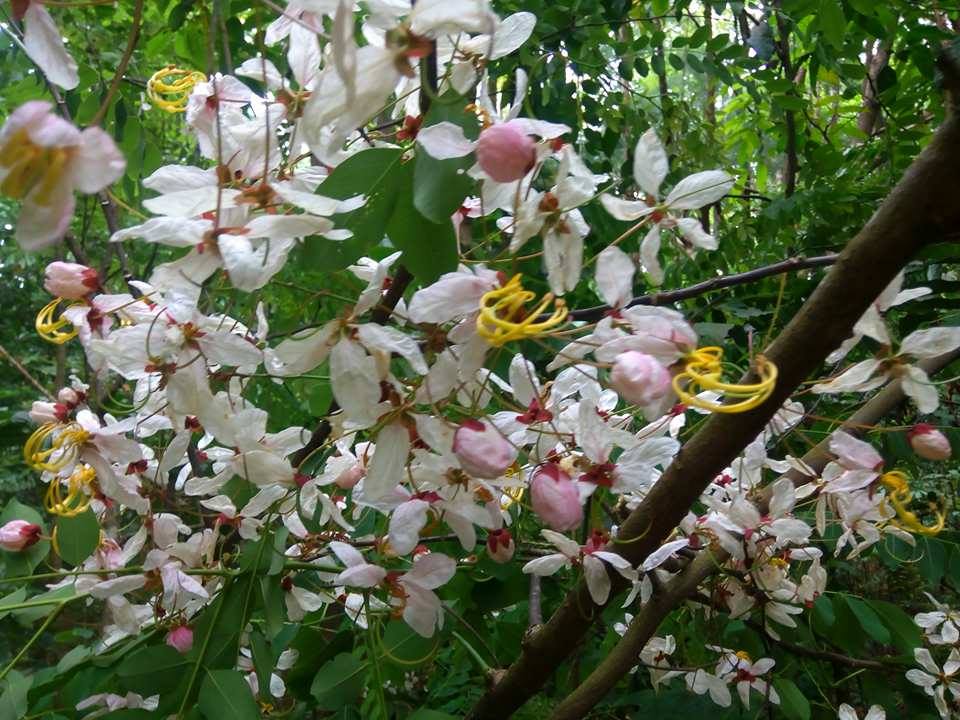
Many though this is Palawan cheery blossom. Errol Gillang photo*
One article posted at www.choosephilippines.com claimed that residents in the area called these trees Palawan cherry blossoms. It caught my curiosity, because I was suspecting that the trees, with a mixture of pink, red, white, and yellow colored flowers, are not the Palawan cherry blossoms (Cassia javanica ssp. nodosa) that are recently known to me. The photo accompanying the said online article reminded me of similar pictures I took at the site almost two decades ago.
I requested one of the MKNP staff, Errol Gillang, to take close-up photos of the flowers, trunk, and leaves of the tree so I could consult some of my friends, who are botanists or with interests and working on botanical concerns, as to the exact identification of the species. After receiving several photos from my namesake, I shared them online, particularly Facebook, and responses to my post are interesting. Some friends pointed out the tree is similar to Palawan cherry, but a few suspected it as Salingbobog, known to science as Craveta religiosa, and one of our native species that can be found as well at the Diliman campus of the University of the Philippines. Surprisingly, Gillang told me they found a plate in one of the trees that states it is Akle (Albizia acle), a species native in the country.
Antsoan and Pink shower trees
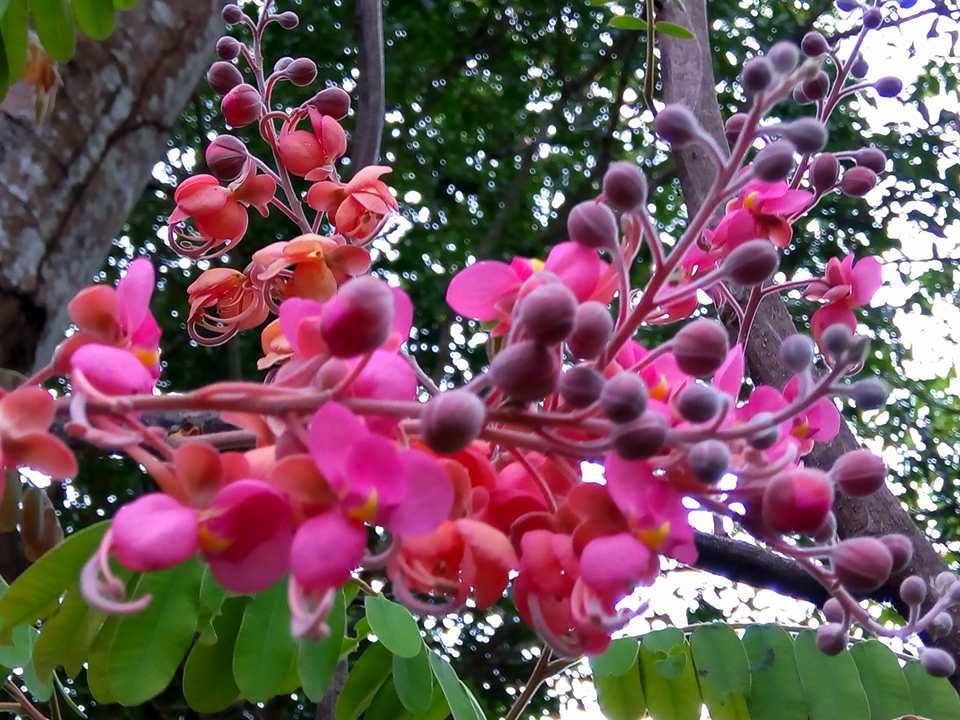
The flower of Pink shower tree, a species native to tropical America. Errol Gillang Photo*
It was botanists Pat Malabrigo and Pieter Pelser of the UP Los Baños and University of Canterbury, respectively, who confirmed that the species is Cassia javanica ssp. javanica or Antsoan, which is a non-native species of the Philippines, or an exotic one. Malabrigo further asserted that the so-called Palawan cherry, known as Pink cassia or Java cassia, is not native to the Philippines although it bears Palawan as its popular name, simply because it is widespread in that province.
Gillang sent me additional set of photos of lovely pink-colored flowers of another tree he found in Sitio Pabrica, Brgy. Cabagna-an, La Castellana and within the MKNP, too. I similarly posted the photos on my Facebook account, and Pelser identified it as Cassia grandis, a species native to tropical America. The common English name of this tree is Pink shower, according to biologist Renee Paalan of the Silliman University.
My Facebook posts on the two flowering plants received numerous and varied reactions. Many of my friends were amused of the beautiful color and gorgeous look of flowers, and some requested information where to secure the seeds or seedlings of trees, while many expressed interest to visit the sites where the two species are found. On the other hand, several friends in the conservation community were alarmed to know the presence of these exotic species in the protected area, and they urged the planting of indigenous or native trees, while suggesting the eradication of non-native species, because they might affect the biodiversity of the MKNP.
Forester Edgardo Cueto, a Ph. D on forest resources management recommended for the conduct of risk analysis to determine the impacts of exotic species on the MKNP’s biodiversity. He said the introduction of exotic species might “entail the modification of entire ecosystems, including overgrowing and shading out native species, changing fire regimes, and modifying water and nutrient systems.” Cueto added the species hybridization and introgression and ultimately the invasive meltdown are possible consequences. The result of the assessment shall be used in the decision-making by either extirpate the species or let them be managed properly, Cueto said.
Other exotic species and reforestation
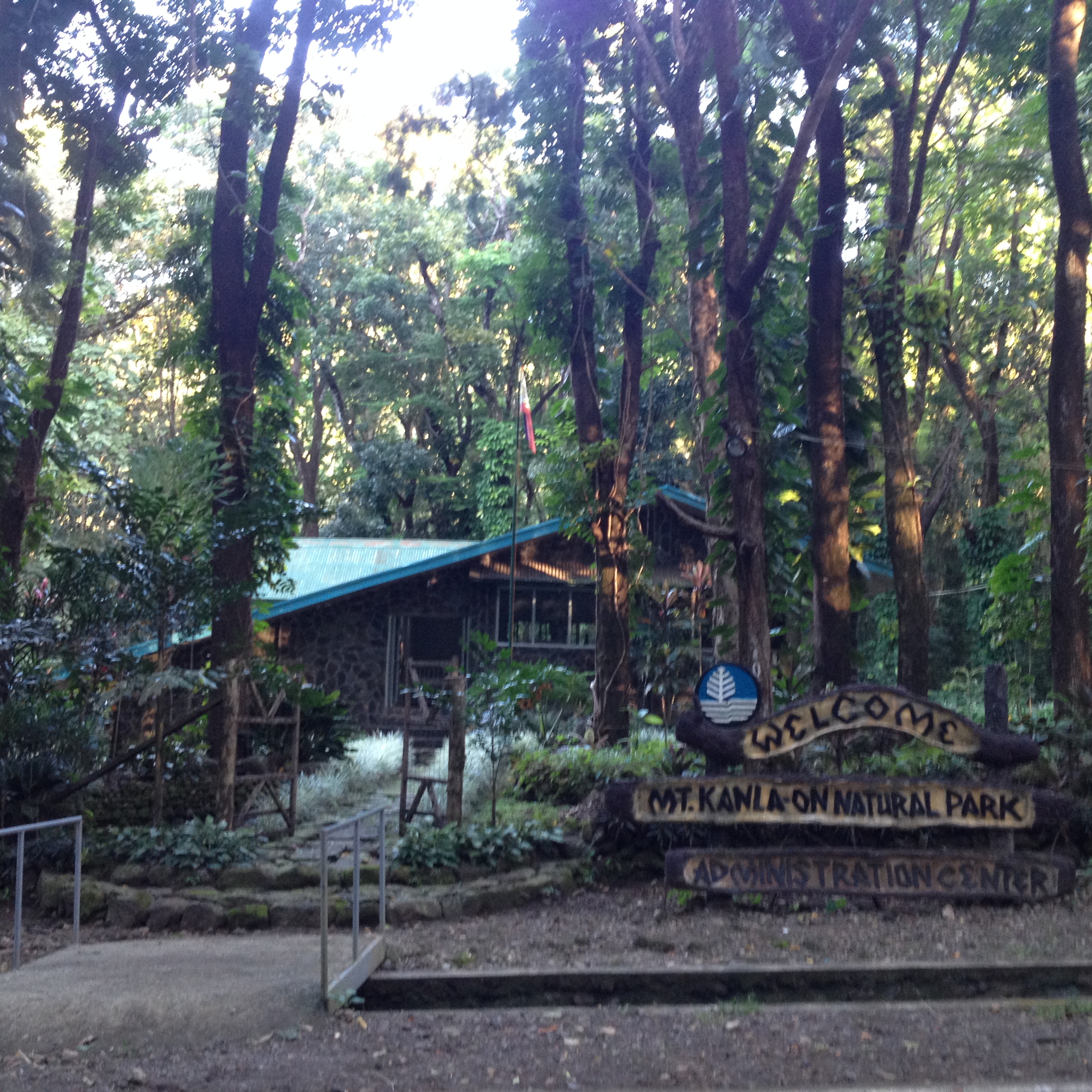
Other exotic species found at the MKNP administration centre are mahogany, eucalyptus, gmelina, and a species of teak*
The Antsoan is not the only exotic plant found at the MKNP administration center, as there are also mahogany, gmelina, eucalyptus, and a particular species of teak (Tectona grandis), among others, although several native species are available at the site, too. These trees were planted in the 1960s to 80s as part of the reforestation project of the then Bureau of Forest Development, and later on the Department of Environment and Natural Resources, forester Johnny Flores, who served as a manager of the project site at one point in time, said.
I could only assume that the planting of these exotic species in the area was done with noble intention of reforesting the site that was badly deforested prior to it, according to local folks. I think, the issue of exotic species in relation to biological diversity has never been considered seriously at that time. If my recollection is right, it was only in the mid 80s when the issue of biodiversity started to become popular and the advocacy for planting of native plant species emerged.
I could recall that the late forester Larry Cayayan, who was then the Provincial Environment and Natural Resources Officer of Negros Occidental in early 1990s, once told me the reforestation at Calapnagan included the planting of flowering trees at the park’s boundary so there would be visible markers that will separate it from private lands. He opined that in a way these flowering trees would be an added attraction of the park.
Most likely, with the influenced of the government’s reforestation project, settlers, not only at Calapnagan but also in other barangays within Mount Kanla-on, planted trees, comprised mostly of exotic species, in their backyards and farm lots, while others established tree farms. While Mount Kanla-on was established as a national park in 1934, it has never been spared from settlements that became political units as barangays through the years.
Mount Kanla-on and NIPAS
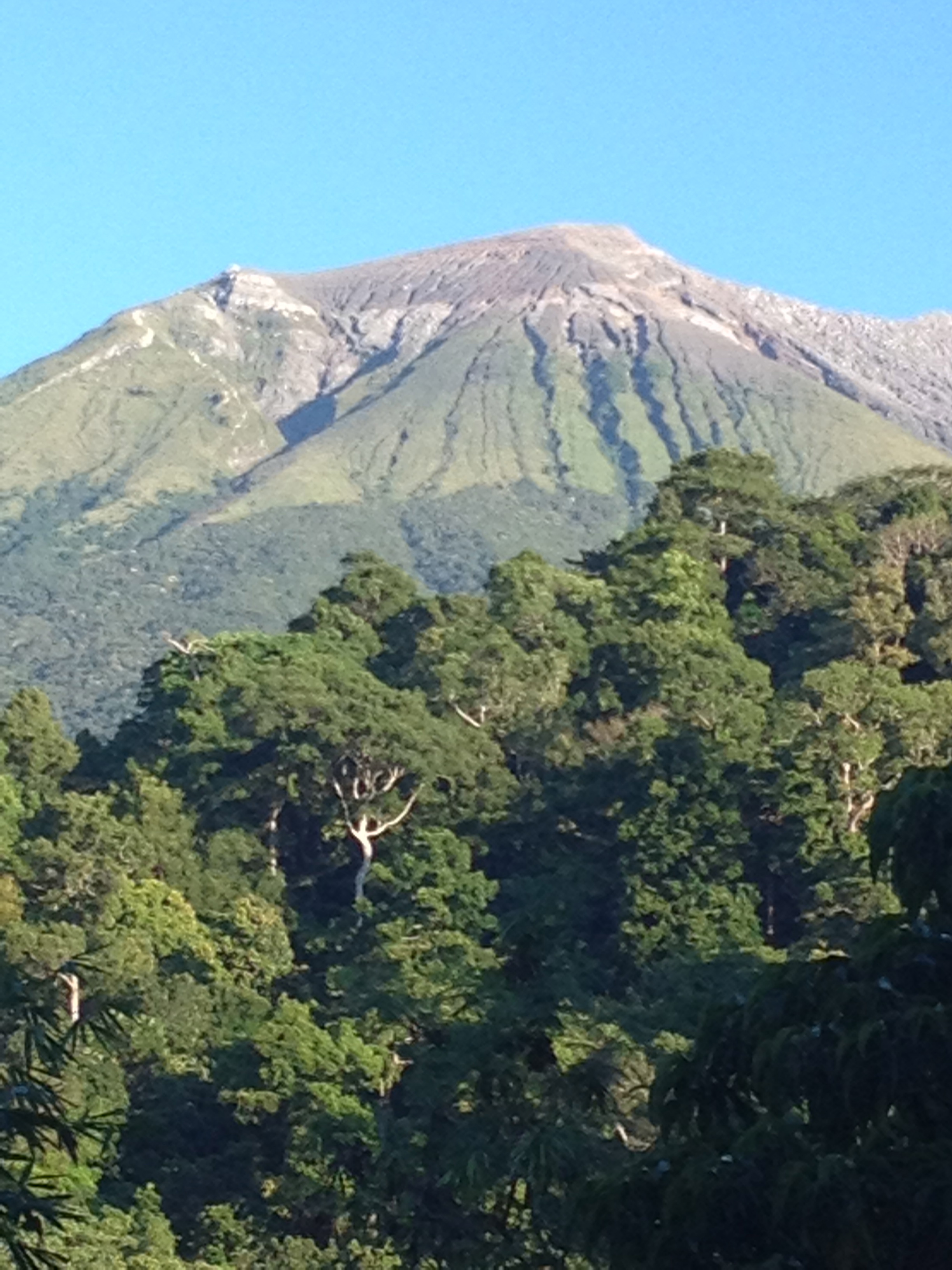
The recovering forest at the MKNP administration center*
Mount Kanla-on became an initial component of the National Integrated Protected Areas System with the enactment of Republic 7586 in 1992. The NIPAS Act transformed the national parks and other nature reserves to protected areas, and from then on, biodiversity conservation was the focused on the establishment and management of these sites. Prior to this, we were largely following the American-tailored national park system, as introduced by the American colonial regime in 1932. As one measure to protect the biodiversity, the DENR came out with a guideline prohibiting the introduction of exotic species in protected areas.
When I was the park superintendent of the MKNP, from 1995 to 2002, my staff and me were aware of the presence of these exotic species. We knew these flowering trees, but with all honesty, we were unsure at that time if this so called Palawan cherry is an exotic species, although we were more in suspicion that it is, indeed, a non-native tree. I did not take much interest over these trees, because some are planted in the disputed “private lands” within the MKNP. I reviewed the 1st management plan of the MKNP, but unfortunately it did not list and discuss exotic species.
Considerations and possible options
The Protected Area Management Board of the MKNP, when I was still the park superintendent, came out with a policy allowing the cutting of planted and exotic species in the area. The purpose of the guideline was to minimize pressure to remaining natural forests by allowing communities to utilize and benefit from their planted exotic trees. In every tree cut, a replacement of five native species was required. It was also a way to eradicate exotic species in the area. The policy did not include cutting of trees at the government’s reforestation sites, as there might be issues on audit regulations.
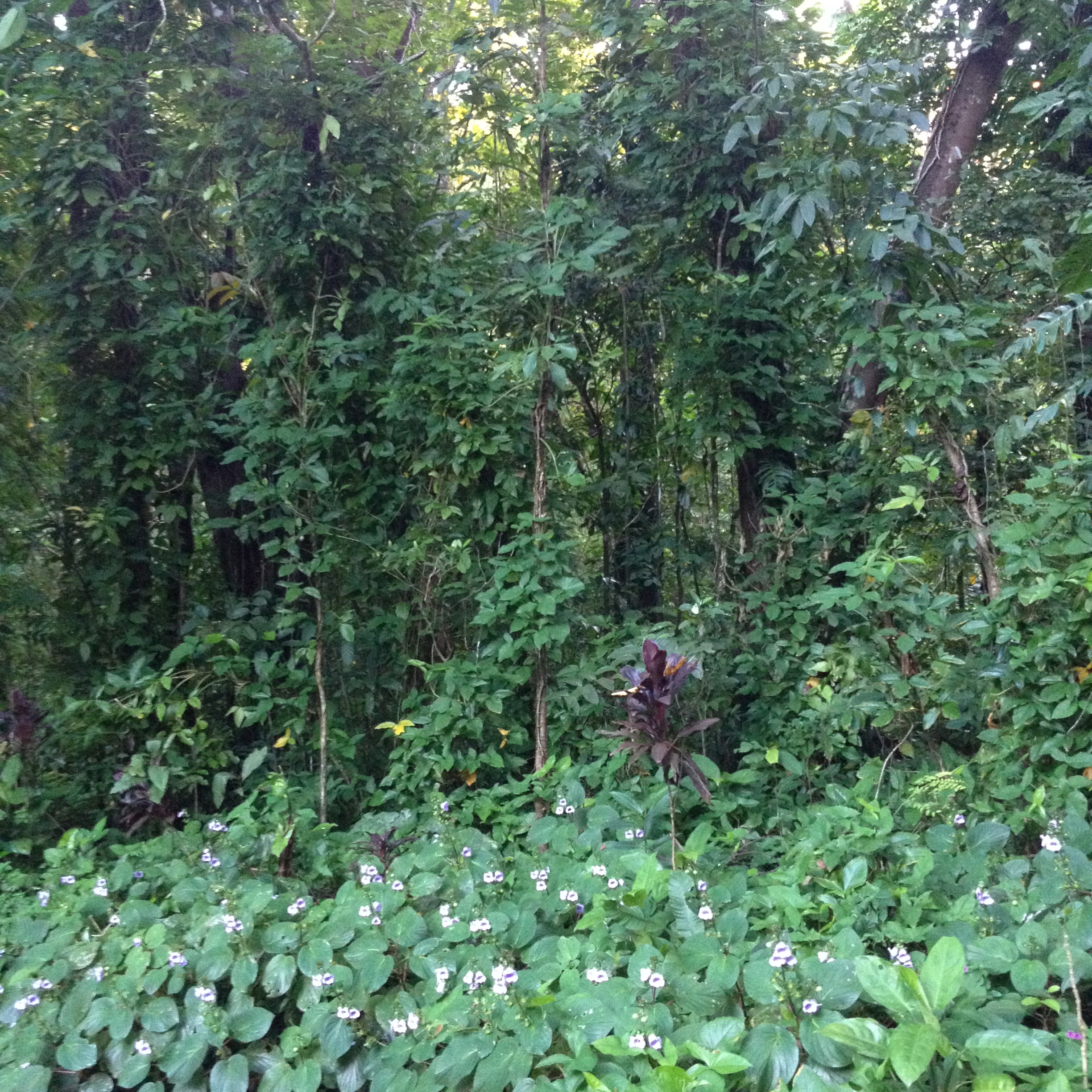
Some exotic species are now populated with vines and other plants*
I was at the MKNP administration center last year, and I observed that it seems the number of these exotic trees did not increase. I noticed some mahogany trees are already invaded with vines and other plants, while several undergrowth species are noticeable. The interest of the local government of La Castellana to promote this area for tourism purposes is understandable and a good idea. In fact, in the original management plan of the MKNP, this site has been identified as ecotourism zone, because, aside from the remaining natural forests found in the area, it is here where one can have a good view of the towering Kanla-on Volcano, and it is ideal for picnic, camping, and other outdoor activities.
I am amendable to Cueto’s recommendation to conduct a study on exotic species and its impacts, not only at Calapnagan, but the entire MKNP so that appropriate conservation measures shall be adopted by the PAMB. MKNP is also gifted with numerous native flowering plants that can be propagated. The MKNP Act of 2001, or Republic Act 9154, prohibits the establishment and introduction of exotic species with allelopathic effect, or those detrimental to endemic species, or without prior PAMB permit.*
-
Recent
- Environmentalist Freddie Marañon passed away
- Close to two decades of environmental reporting
- Mt. Kanla-on reopens for mountaineering
- The Twin Lakes of Negros Oriental
- Rafflesia speciosa found in another site of the Mount Kanla-on Natural Park
- Some concerns on the reopening of Mount Apo for mountaineering
- Flowering trees in Mount Kanla-on gaining public attention
- Green and open spaces for Bacolod
- Climate change nightmares – RollingStone
- Energy exploration and development in protected areas
- Commendable collective efforts: Putting off grassfires in Mt. Kanla-on
- Closing a mountain for mountaineering: The story of Mt. Kanla-on
-
Links
-
Archives
- October 2020 (1)
- September 2020 (1)
- July 2017 (1)
- June 2017 (1)
- May 2017 (1)
- April 2017 (2)
- August 2016 (3)
- April 2016 (1)
- March 2016 (1)
- December 2015 (1)
- March 2015 (1)
- January 2015 (2)
-
Categories
- Biodiversity Conservation
- Climate Change
- Coastal and Marine Ecosystems
- Conservation Events
- Conservation Initiatives
- Deforestation and Degradation
- Ecosystems
- Ecotourism
- Forest Ecosystem
- Fresh Water Ecosystems
- Genetically Modified Organisms
- Governance
- Indigenous People
- Mining
- Mt. Kanla-on
- Nature Interpretation
- Protected Areas
- Renewable Energy
- Risk Reduction and Management
- Species Conservation
- Toxic Chemicals
- Uncategorized
- Watershed
- Wildlife Species
-
RSS
Entries RSS
Comments RSS